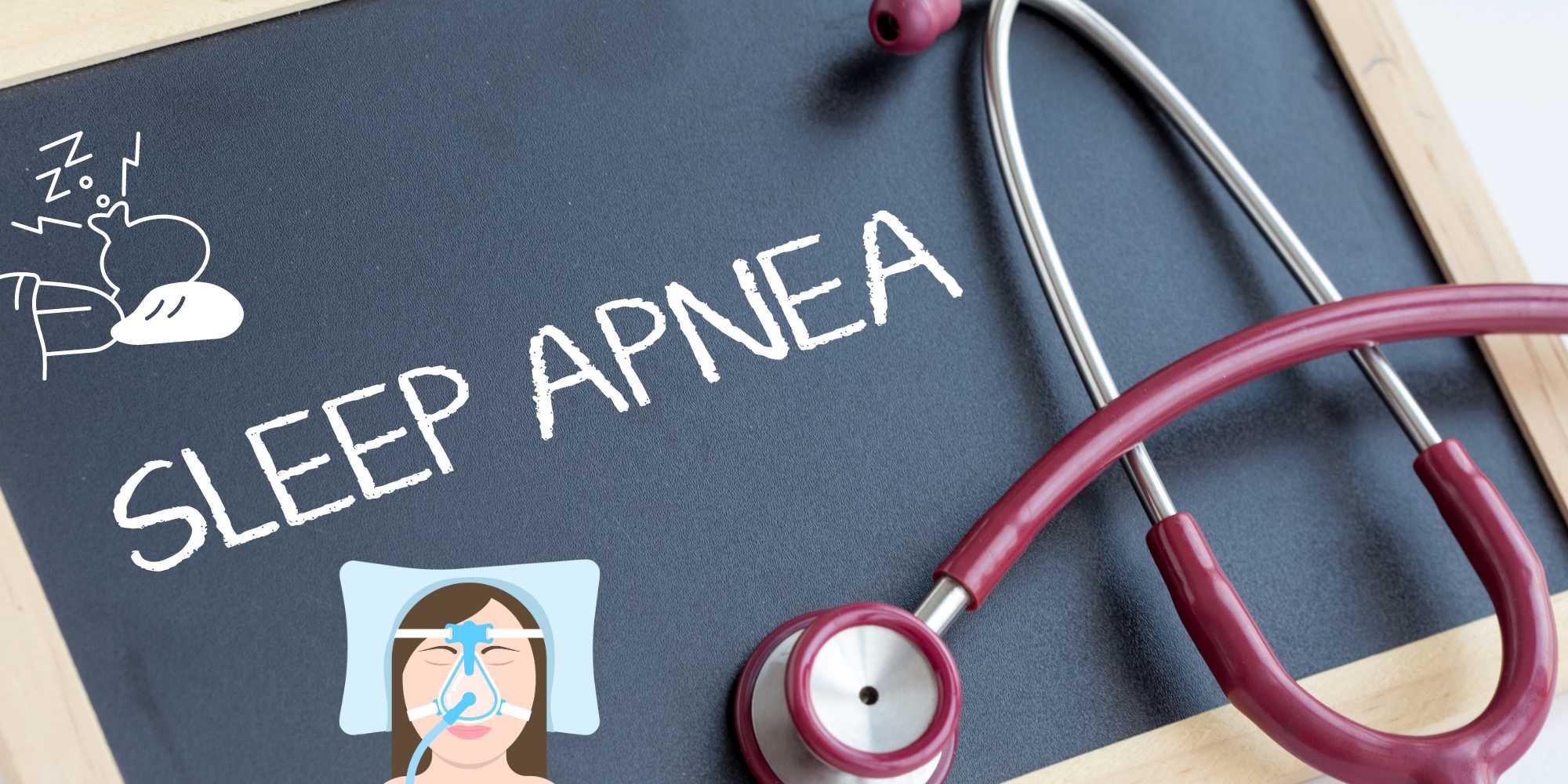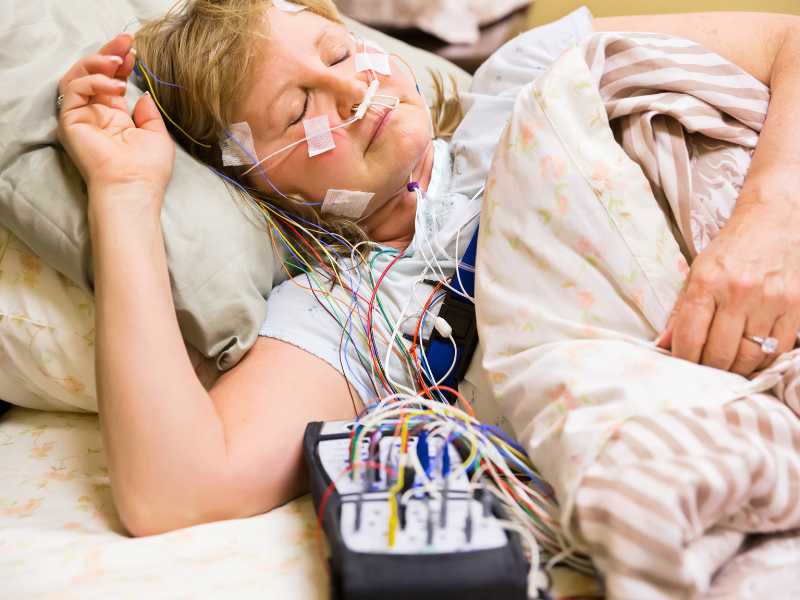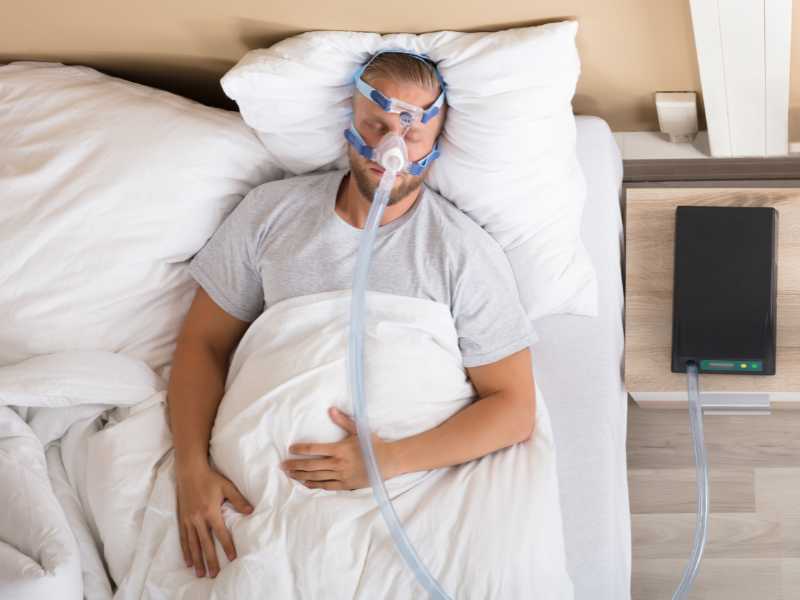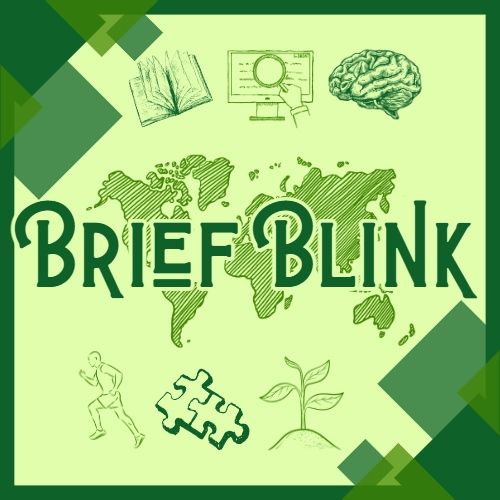What is Sleep Apnea? Signs, Symptoms, and Treatment
Sleep apnea has detrimental effects on us, and it goes around unnoticed. It's more than just snoring. Notice the signs and save yourself or someone you know.

There's a condition that goes around unnoticed. It has a profound impact on the lives of everyone affected. Sleep apnea is more than simply snoring. It's detrimental to your physical and mental wellbeing.
Leaving it untreated can be dangerous. It's lethal to leave it undiagnosed. 4 in 5 people with sleep apnea don't even know they have it 1. Many people are suffering unaware. Staying informed and taking action on sleep apnea might save your life or the life of a loved one.
Sleep apnea is a serious sleep disorder in which breathing pauses and restarts. The common form is obstructive sleep apnea (OSA) where one's throat muscles relax too much while asleep - blocking the breathing airway.
The less common type is central sleep apnea. That's where the brain doesn't communicate well with the muscles that control breathing. Both forms of sleep apnea are similar; however, I will mostly discuss OSA, as it affects the general population.
What does sleep apnea look like?
Some of the noticeable symptoms of sleep apnea are:
- Lower quality sleep and restless sleep
- Loud snoring and gasping for air - enough to wake others around you
- Dry mouth caused by mouth breathing
- Dizziness and headaches when waking up due to lowered blood oxygen levels
- Daytime sleepiness leading to poor concentration, slow reaction, and forgetfulness
Sleep apnea puts your health in jeopardy. It increases your chance of having high blood pressure and type 2 diabetes. You'd be at higher risk of heart attack and stroke. Sleep apnea also affects your ability to drive - putting everyone's safety on the road at risk.
Severity of sleep apnea
Sleep apnea can range in severity. It depends on how often it disturbs your breathing. More severe cases of sleep apnea typically come with experiencing more difficult complications.
People without sleep apnea have fewer than 5 disturbances per hour while they sleep. Someone with mild sleep apnea would have an average between 5 and 15 disturbances per hour.
Having moderate sleep apnea means having between 15 and 30 disturbances per hour. People with severe sleep apnea have over 30 disturbances per hour.
| Severity of sleep apnea | Number of disturbances |
|---|---|
| Mild | 5 to 15 |
| Moderate | 15 to 30 |
| Severe | Over 30 |
Living with sleep apnea
If not managed, sleep apnea can do plenty of harm to your overall wellbeing. You might experience:
- Daytime fatigue. Losing sleep can lead to difficulty concentrating in any activity. You could also experience more mood swings or feel depressed.
- Annoyed and sleep-deprived partners. You might have heard your spouse complain about snoring.
- High blood pressure and heart problems. Lowering blood oxygen can increase blood pressure and stress the cardiovascular system. You'll more likely develop hypertension, have heart attacks and stroke. You might experience atrial fibrillation, which are irregular heartbeats.
- Type 2 diabetes. You're more likely to develop insulin resistance and type 2 diabetes.
- Liver problems. Sleep deprivation has a negative effect on the liver.
Types of sleep apnea
Obstructive sleep apnea (OSA)
When the muscles in the back of your throat relax, your airway closes. Breathing with a narrowed airway might mean that you don't get enough air.
This lowers your blood oxygen and triggers a response in your brain - to wake you and to reopen your airway. You may not notice it. OSA is the most common form of sleep apnea.
Central sleep apnea
The cause of the less common form of sleep apnea is poor communication between the brain and your breathing muscles. Central sleep apnea differs from OSA, where a physical impairment blocks your breathing.
Complex sleep apnea
Having both OSA and CSA is possible. Sleep studies can identify most cases of sleep apneas, but complex sleep apnea may require a later diagnosis. This would be after unsuccessful treatment(s) of OSA, typically after attempting CPAP machines.
Risk of sleep apnea
Who does sleep apnea affect?
Both OSA and central sleep apnea can affect anyone, even children. Sleep apnea is more common among older people over the age of 65. Men also have a higher risk of having any form of sleep apnea.
Risk factors for sleep apnea
- Overweight and obesity. Obesity increases the risk of OSA. Fat built up around the upper airway may obstruct your breathing.
- Larger necks. Neck circumference is a strong predictor of OSA 2.
- Being male and being older. Men are 2 to 3 times more likely to have sleep apnea than women. Sleep apnea is more prevalent in older adults.
- Family history. Having family members with sleep apnea is associated with higher risk.
- Smoking. Smoking can increase inflammation in the upper airway.
- Substance use. Alcohol and sedatives can relax throat muscles, which may worsen symptoms of OSA.
- Certain medical conditions. Having high blood pressure, type 2 diabetes and congestive heart failure increases your risk of sleep apnea. Having had a stroke increases your risk for central sleep apnea.
Diagnosing sleep apnea
See your doctor if...
If you notice disturbances in your breathing while sleeping, mention them to your doctor. It's common for partners or family to notice the signs too - usually as loud snoring or gasping.
If you notice symptoms, talk to your doctor about them so you can get diagnosed by completing a sleep study.
Sleep studies

Sleep studies, also known as polysomnography, are how people get diagnosed with sleep apnea. You can have sleep studies done at:
- Sleep labs or sleep clinics. Technicians will fit you with sensors that record information overnight. You'll then relax and sleep while the equipment monitors you.
- Home. The technician sets you up or gives you a device suitable for recording information while you sleep at home. Follow instructions and sleep normally until the next morning.
Sleep studies typically end after one night, where the sensors can be removed by morning. Once the results are ready, they are sent to your doctor. They will then contact you to discuss its findings.
Treatment and Management
How is sleep apnea treated?
Leaving your sleep apnea untreated is a bad idea. You're more likely to develop several other health complications. Or worse, you're depriving your loved one(s) of their precious sleep by waking them all night.
Your doctor would recommend trying certain ways to manage sleep apnea, such as...
Lifestyle changes with sleep apnea
Changing lifestyle factors may not get rid of sleep apnea, but it helps reduce symptoms.
As OSA is usually the result of extra fat tissue in your upper airways, losing weight helps tremendously. There are several lifestyle changes you can take to start losing weight.
Alcohol contributes to worsening sleep apnea, as consuming it relaxes the mouth and throat muscles. If you can't abstain fully, try cutting back and cutting off at least 4 hours before bed.
These lifestyle changes will not only reduce your symptoms, but will also help prevent the development and advancement of sleep apnea.
Continuous Positive Airway Pressure (CPAP)

No matter the severity, there is one way to treat sleep apnea reliably. That's with a continuous positive airway pressure (CPAP) device. These devices push air into your airways and prevent your throat from closing.
It's important to find the right mask and machine that suits your needs. There are plenty in the market that will cover any need.
Nowadays, CPAP devices are small and silent - designed to intrude as little as possible into your sleeping habits.
Dental devices
Another option for milder cases of sleep apnea is the use of a mandibular advancement splint (MAS). These are custom-made mouthguards that pull the lower jaw forward by millimeters.
This is another way to keep the airway open. However, these are usually more expensive than a CPAP device.
MAS can be as useful as CPAP devices in treating OSA if you have a mild-to-moderate case of sleep apnea. CPAP is still more reliable, especially if you have severe sleep apnea.
Positional therapy
It's possible for you to only have sleep apnea when sleeping on your back. Sleeping on your side can help reduce or eliminate sleep apnea symptoms.
You can try sleeping on your sides with support to your back or front. Attaching a tennis ball to the back helps some people stay on their sides. CPAP suppliers also sell small devices that help with positional therapy.
Treating Nasal Congestion
Managing your allergies can help reduce the effects of mild sleep apnea. You can try getting yourself a nasal spray. They clear sinuses and help with the flu, colds, and allergies. They are over-the-counter and perfectly harmless to try.
You can keep your nasal passages moist by using a humidifier and drinking more fluids.
Upper airway surgery
When CPAP and other treatments are ineffective, surgery is a last resort. Upper airway surgery removes tissue from the throat to create more space.
Unfortunately, the surgery doesn't prevent your throat from collapsing. There's also only so much tissue that we can remove. Therefore, this may not be effective.
Sleep apnea is a condition that worsens if ignored. It's best to try treating it now than to see it progress.
Get some sleep
I hope this article gave you some insight into sleep apnea. Being in the sleep industry, I aim to equip you with the information to act on improving your sleep. You could start by improving your sleep hygiene.
If you notice signs of sleep apnea, on you or your loved ones, talk to your doctor and get diagnosed.
Frequently Asked Questions
Can you cure sleep apnea?
Some people have resolved sleep apnea after going through lifestyle changes, such as losing weight. However, for many people, symptoms may not fully disappear unless treated with a CPAP device.
What happens if sleep apnea goes untreated?
Untreated sleep apnea increases health risks. You'll more likely have high blood pressure, diabetes, and heart attacks. Sleep apnea is associated with depression and anxiety. Sleep deprivation may lead to drowsy driving, which increases your risk of traffic accidents.
What is the best treatment for sleep apnea?
CPAP is the best treatment, as it's the most reliable method to treat sleep apnea. It's also the only practical option for to treat OSA of any severity.
Are lab sleep studies more accurate than home sleep studies?
Lab sleep studies are more accurate, and can diagnose OSA, central sleep apnea and complex sleep apnea. Home sleep studies are just as effective and more accessible in diagnosing OSA. If you're concerned about potential OSA, a home sleep study should suffice.
References
- Chen L, Pivetta B, Nagappa M, Saripella A, Islam S, Englesakis M, et al. Validation of the STOP-Bang questionnaire for screening of obstructive sleep apnea in the general population and commercial drivers: a systematic review and meta-analysis. Sleep Breath. 2021;25(4):1741–51.
- Ho AW, Moul DE, Krishna J. Neck Circumference-Height Ratio as a Predictor of Sleep Related Breathing Disorder in Children and Adults. J Clin Sleep Med. 2016 Mar 15;12(3):311–7.

